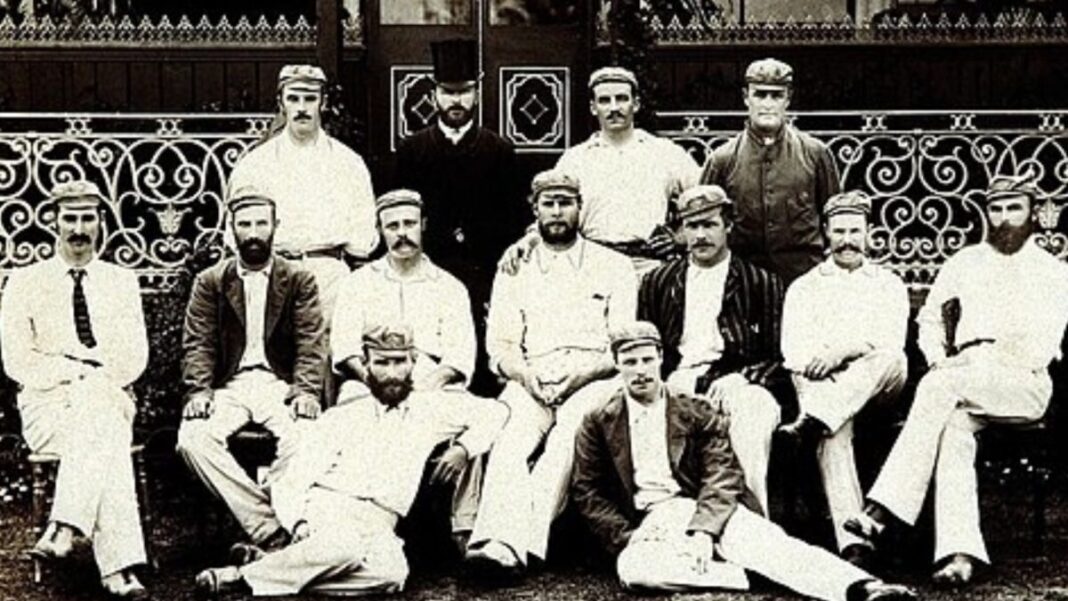Modern-day cricketers appear to be somewhat whitewashed. Media managers and the career paths of contemporary cricketers identified as players of national interest (PONIs) at an early age and nurtured through protected environments certainly have many advantages in terms of player development but seem to lack some of the character and at times larrikinism of past eras.
Social media, mobile phones and other devices all have a part to play in ensuring that the finished product is as wholesome as possible.
>> More recent One-Test Wonders
This, of course, is a good thing in many ways but the lives of players from bygone eras had an enigma about them that makes for great enjoyment.
The 1884-85 Ashes tour is well worthy of an article in itself. Australia under Billy Murdoch were being an ungracious host and treating the English team poorly as well as making previously unheard of pay demands – from an ostensibly amateur team. The pay demand issue had still not been solved nearly a century later when WSC saw the first significant earnings by players.
The behaviour and demands of the team, however, were largely frowned upon by cricketers not playing in the series such as Tom Horan and Fred Spofforth, as well as the media and much of the public and of course the cricket authorities.
This is largely unfathomable that an Australian side was painted as the “bad guys” in an Ashes series at home.
Following the debacle surrounding Adelaide hosting its first ever Test with the SACA as well as a local businessman making substantial losses, the VCA put its foot down and all 11 players missed the second Test in Melbourne.
Eight players made their debuts with five of them playing their one and only match.
Of these five players Percy Marr led the least exceptional life. A carpenter for NSW Railways he was posted in Goulburn and later Newcastle during his career. It is thought of that he was selected for the Test largely on the back of a 69 scored for NSW against Victoria of which Tom Horan who captained the side for the second Test wrote glowingly in his column under the pseudonym Felix in The Australasian.
He bowled 11 overs conceding 11 runs in the English innings. This may be put into better perspective, however, by recognising that William Scotton was in the English side. He scored 0 and 5 with the bat.
Sam Morris holds the unlikely hat-trick of being the first black player to play Test cricket, the first player of West Indian heritage to play Test cricket and the first Tasmanian born player to achieve the feat. His mother was born of West Indian parents in Van Diemen’s Land. His father Isaac was from Barbados and had travelled to Australia during the gold rush.
The family moved to the Daylesford area in Victoria. Sam became groundsman and player at a number of cricket clubs in Melbourne and was also an umpire. Players in the Daylesford district have played for the Sam Morris Cup since 1920.
William “Digger” Robertson had an argument with his East Melbourne captain Australian Test bowler Harry Boyle. What did Digger do? Jump on a different bus and begin playing for a neighbouring club? Hell no, Digger jumped on a ship and moved to San Francisco where he played for three California Cricket Association clubs including the Bohemia CC championship victory. He scored one of the first centuries in Californian cricket history. He also played against the 1896 touring Australians – sans Harry Boyle by that stage.
Harry Musgrove was born in England but grew up in Geelong. His mother’s theatrical background influenced he and brother George to establish a theatrical management company. He happened to be in Geelong on business in December 1884 and played against England scoring 109 and winning himself selection in the Australian side. He became manager of the Australian cricket side in 1896 and the Australian baseball team to the USA in 1897.
He managed both the Theatre Royal and Princess Theatre in Melbourne and arranged and managed Australian tours by famed Australian international performer Nellie Stewart.
Roland Pope, having studied and earned his medical degree in Edinburgh, became Head of Ophthalmology at Sydney Hospital for 17 years. He also donated books and an art collection of some 137 pieces to enable the establishment of a library and art gallery in Newcastle. Giving back to the game he also acted as medical advisor to 12 Australian cricket touring teams and acted as medical advisor and ‘unofficial baggage handler” to the 1902 team.
Don’t leave Sir Donald Bradman stranded on 299. (PA Images via Getty Images)
Along with his brother Norman, Pope was instrumental in establishing the Manly Golf Club acquiring the land it was built on to open it in 1908.
Of all the Australian cricket sides down the generations I think this is the one I would most like to be at a table for dinner with!
Other notable single test players for Australia from the early years include
Bransby Cooper – the first Indian-born Test cricketer
Ned Gregory – first of the famous clan so influential in the first half century of Australian Test cricket.
Tom Groube – the first New Zealand-born Test cricketer.
Jim Slight – umpired the first interstate Australian rules match in 1879.
Reg Allen – caught out in the second innings by teammate Charlie Turner who was fielding as a substitute for England.
John Cottam – selected as a 19-year-old on the basis of a single first-class match for NSW vs England. He then played five other matches for NSW on a tour to New Zealand in 1889-90 then retired from cricket and went to the goldfields in Coolgardie where he died of typhoid aged just 29.
Arthur Coningham took a wicket with his very first ball in Test cricket. Something of a prankster he lit a fire on the ground during a match on a very cold day in Blackpool to keep warm. He was also a hero diving into the frigid River Thames to save a drowning boy. He found life difficult after retirement from cricket and spent time in jail for fraud before dying in an asylum. His son was WWI air ace and WWII commander Air Marshall Sir Arthur Coningham.
Jack Harry was selected for the 1896 England tour but was replaced before the tour even began, ostensibly due to a knee injury but actually because the rest of the team voted him out. He sued the Australasian Cricket Council and accepted an out of court settlement of 180 pounds. Oddly, I was unable to find out whether he was ever selected to play for Australia again.
John McLaren – first Queensland-born player selected for Australia.
Pud Thurlow – Match figures of 0-86 for the debutant Queensland quick, while not great are put into perspective by Clarrie Grimmett and Bill O’Reilly sharing 18 wickets on a spin-friendly Adelaide Oval strip. Then when batting, he was run out for a duck – when you are a No.11 batsman, it would not seem a sin worthy of eternal banishment. However, closer inspection of the scorecard would reveal that the batsman you left stranded at the other end was Donald George Bradman on 299*. Not a good career move you wouldn’t think!
In terms of pure character and packing so much into life the award has to go to George Coulthard. Best known as a VFA player where his contemporaries said of him that he was “the greatest player yet seen in the Australian game”.
In 1882 he was given a season-long suspension for brawling and using bad language – one wonders what he can have said in a football match to have earned such an onerous suspension! The game’s first bona fide superstar he was an inaugural inductee into the Australian Football Hall of Fame.
He umpired a Test match at 22 years of age. While umpiring another match in company with Australia’s future first prime minister Edmund Barton against Lord Harris’s English XI he started cricket’s first international riot by erroneously giving Billy Murdoch out.
He was made even more famous by surviving a shark attack and by fighting bare-knuckle champion Jem “The Gypsy” Mace, he was also the alleged source of a dreamed premonition that convinced many punters to back a horse at very long odds to win the Melbourne Cup – it finished nearly last.
In 1882 while serving as the English cricket team’s umpire on its first quest to regain the Ashes he fell ill, was diagnosed with tuberculosis and died the following year having packed all this into 27 years.
Philanthropists, rogues, humanitarians, charlatans, intellectuals!! And these are just a selection of some of the players who have played a single Test for Australia – not even all of them. I am sure many more stories abound.
They did, however, all share one thing in common. The most prized piece of sporting attire in Australian sport – the baggy green cap. Theirs are probably in better condition than Steve Waugh’s too.

